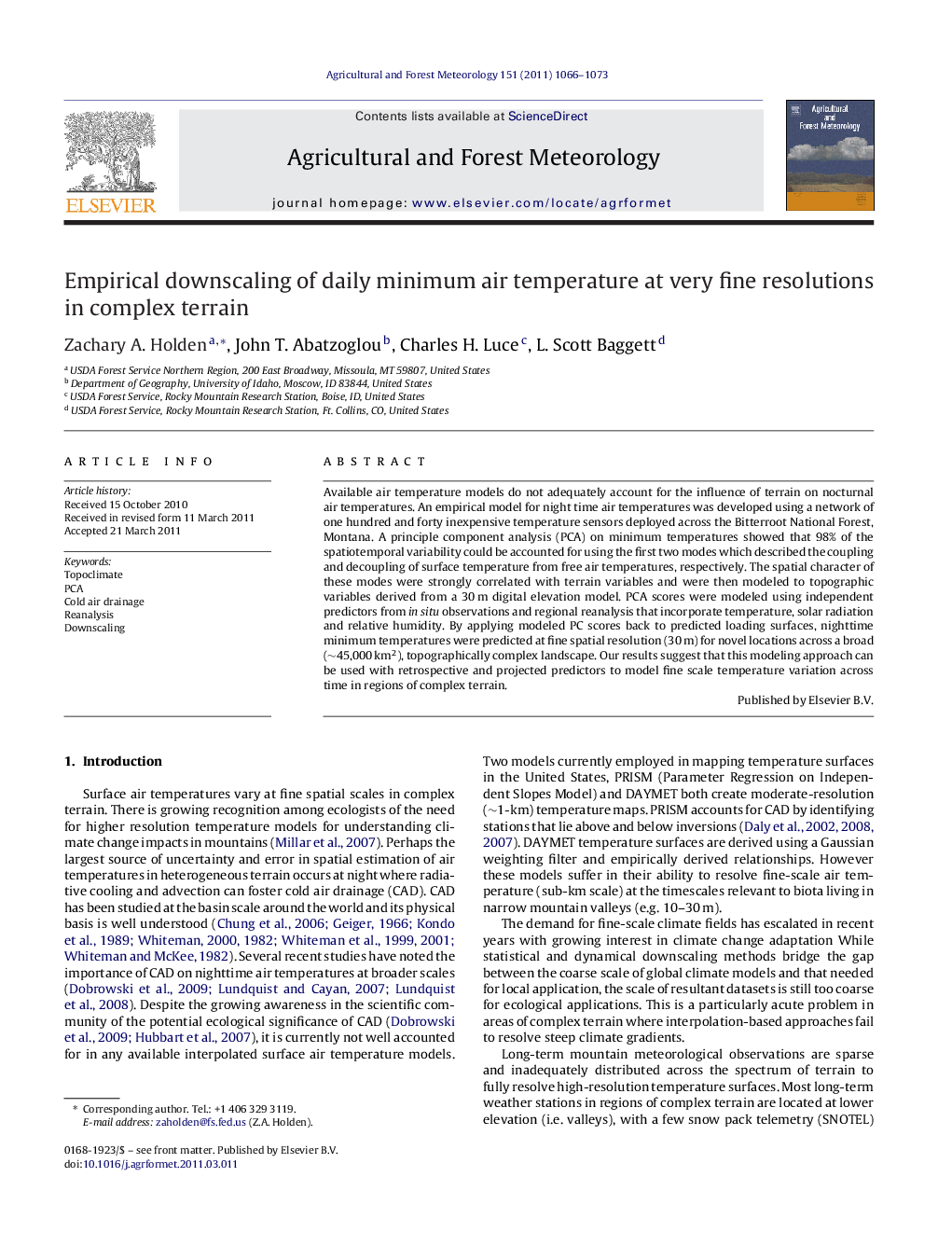| Article ID | Journal | Published Year | Pages | File Type |
|---|---|---|---|---|
| 82119 | Agricultural and Forest Meteorology | 2011 | 8 Pages |
Available air temperature models do not adequately account for the influence of terrain on nocturnal air temperatures. An empirical model for night time air temperatures was developed using a network of one hundred and forty inexpensive temperature sensors deployed across the Bitterroot National Forest, Montana. A principle component analysis (PCA) on minimum temperatures showed that 98% of the spatiotemporal variability could be accounted for using the first two modes which described the coupling and decoupling of surface temperature from free air temperatures, respectively. The spatial character of these modes were strongly correlated with terrain variables and were then modeled to topographic variables derived from a 30 m digital elevation model. PCA scores were modeled using independent predictors from in situ observations and regional reanalysis that incorporate temperature, solar radiation and relative humidity. By applying modeled PC scores back to predicted loading surfaces, nighttime minimum temperatures were predicted at fine spatial resolution (30 m) for novel locations across a broad (∼45,000 km2), topographically complex landscape. Our results suggest that this modeling approach can be used with retrospective and projected predictors to model fine scale temperature variation across time in regions of complex terrain.
► We use networks of inexpensive ibutton temperature sensors and PCA to model the spatial and temporal variation in nocturnal air temperatures. ► We develop spatial indices and empirical algorithms that capture daily variation in cold air drainage. ► These algorithms provide a means of downscaling gridded climate data sets or observational data to the scale of terrain.
